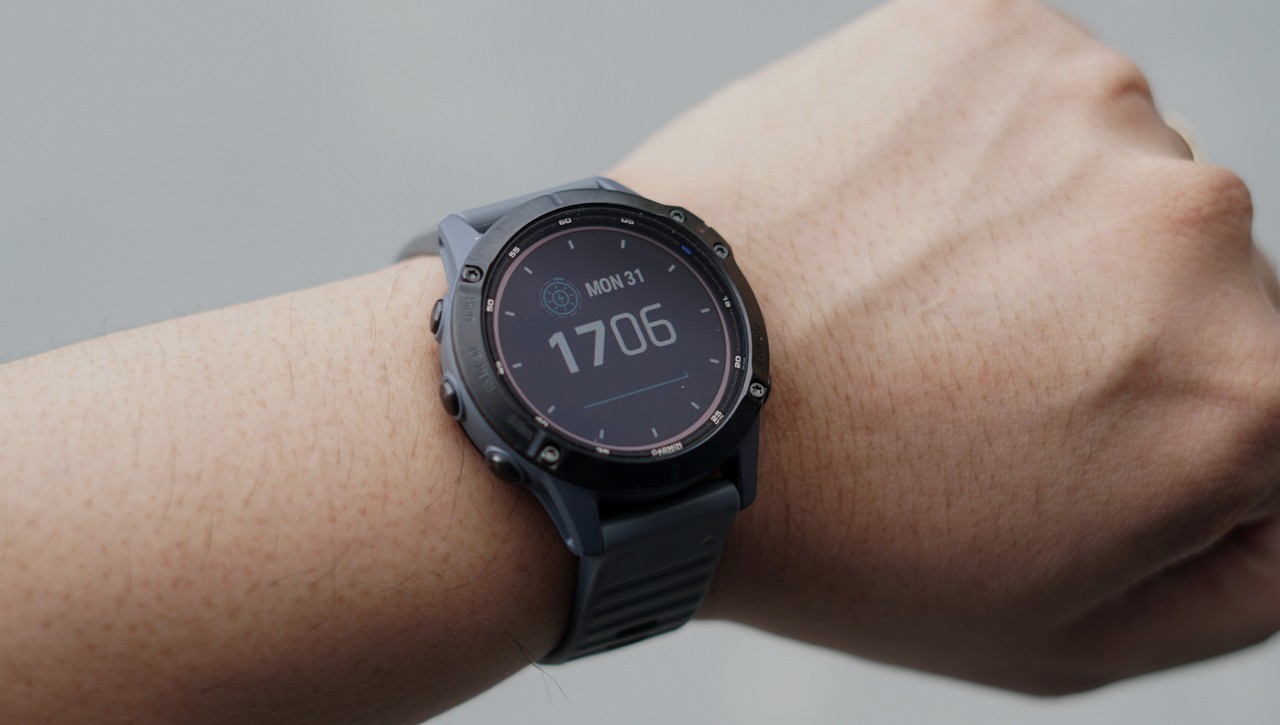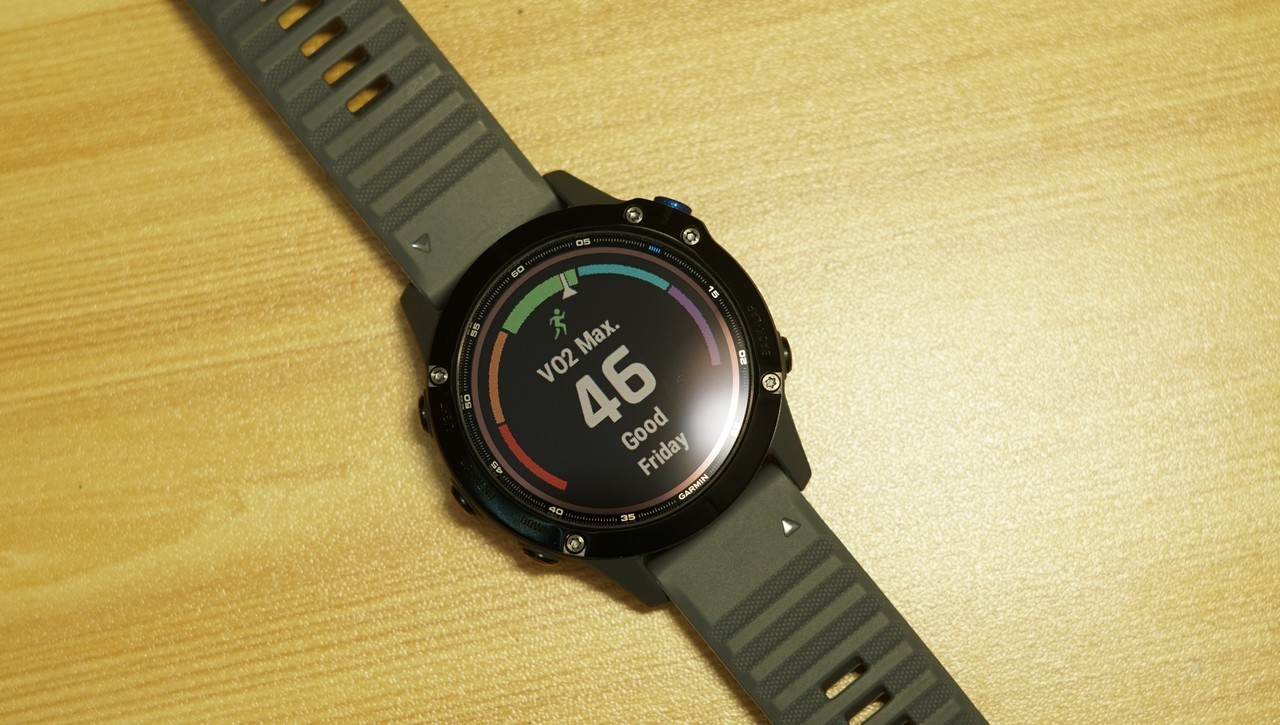
In an age where fitness trackers and smartwatches are a dime a dozen, Garmin’s offerings have fast become the de facto standard for athletes and semi-pros that require a watch that tracks every conceivable part of their performance while on the trail. The Garmin Fenix 6x Pro Solar is the pinnacle of this throw-the-kitchen-sink approach to making fitness trackers, and the result is a truly versatile, if chunky and expensive, fitness tracker that can do literally anything that other competing products can, and then some.
Pros
- Has a full suite of hardware and software that tracks every single metric you can think of
- Has solar charging capability
- Solid and sturdy thanks to its titanium chassis
Cons
- Expensive
- It’s overkill if you don’t compete seriously

Design and construction
The Garmin Pro Solar Fenix 6x is a chunky, 51mm watch that’s as subtle as a tank on a street when worn on your wrist. Its chunkiness isn’t just for looks though – the chassis is made out of titanium for strength and lightness, with Torx screws around the bezel to keep the whole body watertight.
There are 5 buttons around the chassis that you use for navigation since the display isn’t touch-sensitive – par for the course for many of Garmin’s offerings.

The big difference between this model and everything else in Garmin’s lineup is the addition of a solar-charging lens installed in between the display and the Corning Gorilla Glass protection.
While adding a solar charging module seems like a no-brainer, the size of the solar panel as well as the compromises made to make it transparent and see-through means it’s only there to compliment the watch’s main charging component, and not replace it entirely. It’s going to add a few hours to the battery life, but you’ll still have to charge it the old fashioned way if you want to keep using it.
The display itself isn’t an LCD or OLED one that I’m used to seeing on other smartwatches. Instead, Garmin uses a memory-in-pixel display that consumes far less power than the display tech I mentioned. The downside is that it’s not as bright as other more commonly used display tech on other smartwatches like Huawei’s GT2 2e, for example.

Features and performance
Like I mentioned earlier, the Garmin Pro Solar Fenix 6x has a lot of features and tech crammed into its body. Aside from your typical heart sensor, the watch also has a very accurate GPS module, accelerometer, gyroscope, Glonass capabilities, barometric altimeter, compass, thermometer and a pulse oxidation sensor. In short, it has all the sensors you’d ever need to track whatever physical activity you’re doing to a high level of precision.
The watch doesn’t stop there. The watch also has an NFC chip built into it (I’m assuming for cash-less payments in more enlightned countries), storage for up to 2000 songs, and waterproofing up to 10ATM or up to 330 feet.

I’m no stranger to Garmin’s method of navigation for its smartwatches but it doesn’t make it any less clunky, as transitioning back to physical buttons took a bit of getting used to after being spoiled with touch controls on other watches.

Aside from the normal stats you come to expect from most smartwatches, the Garmin Pro Solar Fenix 6x, you’re also getting recovery stats, incredibly detailed heart metrics as well as other stats useful for athletes and coaches.

Activity profiles that are pre-loaded in the Garmin Fenix 6x Pro Solar is incredibly robust, and I’d say pretty excessive (you’re probably not going to be using the backcountry ski profile any time soon).
As awesome as the Garmin Pro Solar Fenix 6x is when it comes to tracking what you do, it sucks as a general-purpose smartwatch. Speaking as a nearly 6-feet tall guy that’s on the large (and soft) side, wearing it as an everyday watch sucks. It’s incredibly big and obnoxious, and while Garmin has done a great job trying to keep the weight down by using titanium, the weight is still noticeable when you’re wearing it.
Its size too is problematic, as it gets caught on clothes, tabletops, and counters as I move around the house and in the car.

Battery life
While we try to review every single possible thing that can be tested with most gadgets, one thing we couldn’t really test out was the Garmin Pro Solar Fenix 6x’s battery life, simply because the watch has a ridiculous endurance. Here’s Garmins estimate:
- Smartwatch: up to 21 days +3 days
– GPS: up to 60 hours +6 hours
– GPS and music: up to 15 hours +1 hour
– Max battery GPS mode: up to 120 hours +28 hours
– Expedition GPS mode: up to 46 days +10 days
– Battery saver watch mode: up to 80 days +40 days
With Garmin only allowing us to test the watch for two weeks, I couldn’t really test see how well actual use jived with Garmin’s claims. I will say though that the watch originally arrived to my door with an initial charge already in it, and during its time with me I never charged it at all and remains operational as of press time.

Verdict: Buy it if you’re a pro and need detailed stat tracking, skip it if you’re not
The Garmin Pro Solar Fenix 6x is literally the last smart watch you’ll ever need if you’re a pro athlete or is someone that requires a detailed account of your workout or run. The amount of information this smartwatch collects from your chosen sport is obscene, and you probably will only charge this thing once a month despite all of that.
That being said, it’s not for typical users, as many of the features that make it so desirable (and so expensive) will probably be a waste for people like me who cosplay as couch vegetables when I’m not in front of a PC.
Likewise, the watch’s Php 55,995 price tag will scare most casual users away, but if you absolutely need to track the minute details of your sport, there’s literally no other choice better than the Garmin Pro Solar Fenix 6x.






